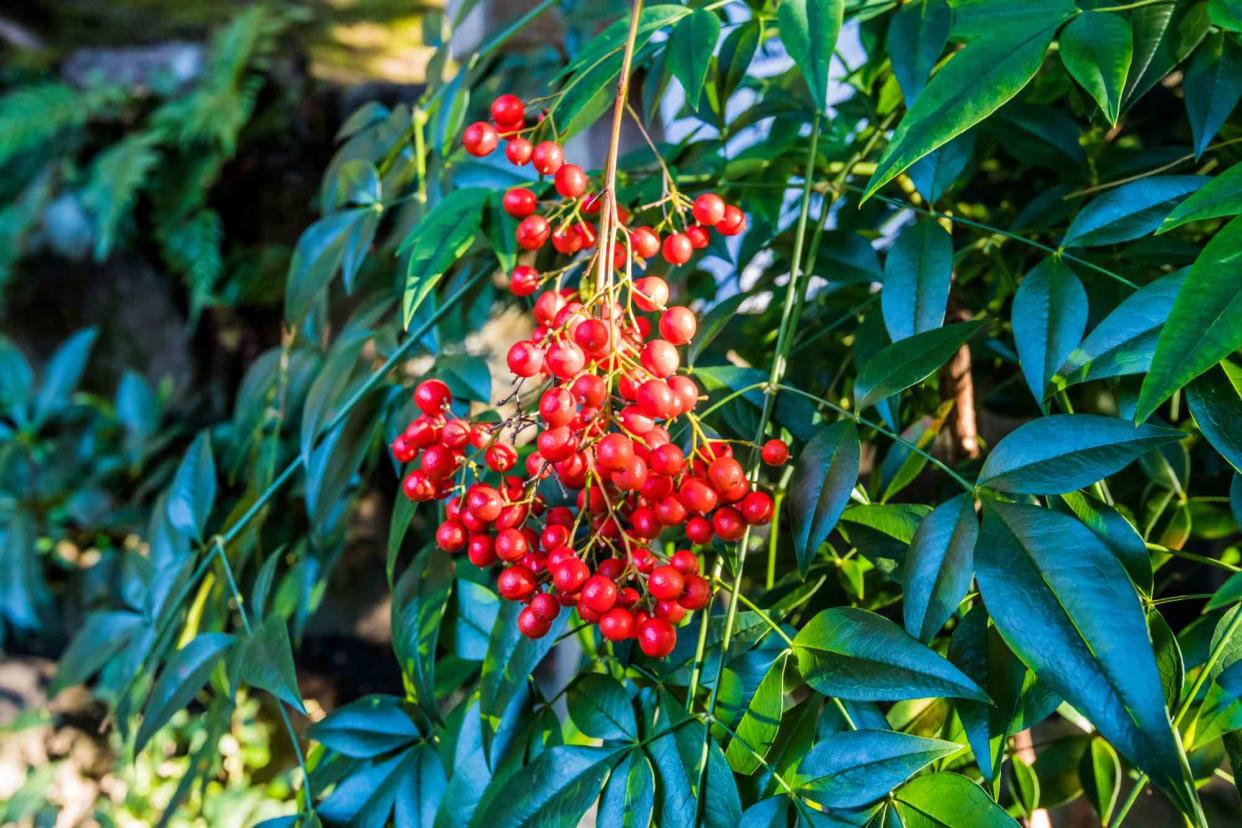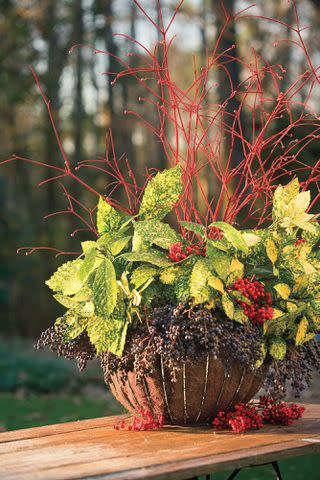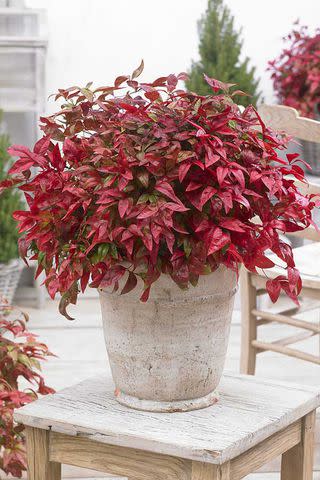Just Try To Kill Nandina

One of the first of many commands my wife gave me after we got married was to rip up all the nandinas in front of my house. "It makes the house look abandoned," she stated. "If you don't do it, I will."
Now that's a threat an experienced gardener like Grumpy loves to hear. Because I know what it takes to tear out an established clump of nandina. This. (We don't have one.)

See, regular nandina (Nandina domestica), also humorously known as "heavenly bamboo," grows a nearly impenetrable network of thick roots that keeps expanding every year. Over time, a small clump grows into a thicket the approximate size of Delaware. Extracting a clump using a pick or shovel goes about as fast as chiseling your way out of Alcatraz. Plus, every little piece of root you leave behind grows another plant. So when my lovely bride threatened to treat the nandina with extreme prejudice, I responded thusly.
"Have fun!"
Over the course of a weekend, the nandina clump shrank with the speed of an Antarctica ice sheet calving off icebergs. The nandina won.
And that's precisely why so many people hate this import from Japan.
Common Name | Heavenly Bamboo |
Botanical Name | Nandina domestica |
Family | Berberidaceae |
Plant Type | Evergreen or Semievergreen to Deciduous Shrub |
Sun Exposure | Sun or Shade |
Soil Type | Rich soil |
Water | Regular watering |
Bloom Time | Late spring to early summer |
Hardiness Zones | 6-9 USDA |
What Is Nandina?
Nandina belongs to the barberry family but is reminiscent of bamboo in its lightly branched, canelike stems and delicate, fine texture foliage.
Nandina is too easy to grow. This upright, evergreen shrub grows in dense stands of cane-like stems everywhere. It grows in sun. It grows in shade. It grows in any well-drained soil. No pests bother it, not even deer. It laughs at droughts. Winter cold is its only obstacle. Below zero temps kill it to the ground. Then it grows back.
Birds flock to the berries (in one documented case, they were affected by cyanide poisoning, a danger for humans, dogs, and cats as well), dropping them everywhere to sprout new shrubs.N. domestica has become so widespread it is considered invasive or a nuisance throughout much of the South. For that reason, naturalists will urge you to do your best to eliminate this plant.
How To Kill Nandina
Seedlings and small plants can be hand-pulled or dug up—just know that it's difficult to remove every inch of the root system, and you may have to do it again if a new sprout pops up. As for an established thicket, you'll need to repeatedly attack the problem. Some recommend buying herbicide, cutting all stems to the ground, and painting the ends with glyphosate. Expect new sprouts to appear the next season regardless of whether you try digging up the root system or spraying. Eventually, persistence can pay off.
Other Ways To Control Nandina
But wait a second. Why should a plant be hated just because it can't be killed? Nandina does have some good points. In the South, it's evergreen. The attractive green foliage turns burgundy and scarlet in winter. And no plant produces showier clusters of bright red berries in fall and winter. They're the best berries for holiday decorating because they're firm, dry, and last for months. If you're the artistic sort, you can use them to brighten up your winter decor.

If thinking about removing your nandina gives you a headache, keeping this plant under control may be the better option. Ugly, leggy stems can be pruned to the ground, which will encourage a new flush of bushy growth. Ripe red berries can and should be removed before birds begin to feast on them (cutting off flowers in spring will prevent berries from forming in the first place). Then survey your property regularly and pull up small plants and seedlings before they become a problem.
Try The Newer Nandinas
While you may hate easy plants, plant breeders love them. So they've gone to considerable trouble in recent years to develop nandinas that grow much shorter than the typical six to eight feet and don't spread. And if you're worried about seedlings sprouting everywhere, most of the new ones bear few or no berries. So what's the attraction? Compact, dense shapes, and attractive foliage. Like this one here.

This new nandina from our Southern Living Plant Collection is named 'Blush Pink.' It grows only two feet tall and wide—perfect for massing under low windows or planting in containers. New foliage emerges bright pink before turning green. In fall and winter, the leaves turn bright red. Another from the collection, 'Flirt' nandina, has deep red leaves and stays even smaller. And they're easy too—both grow well in part shade to shade throughout the South.
For more Southern Living news, make sure to sign up for our newsletter!
Read the original article on Southern Living.
